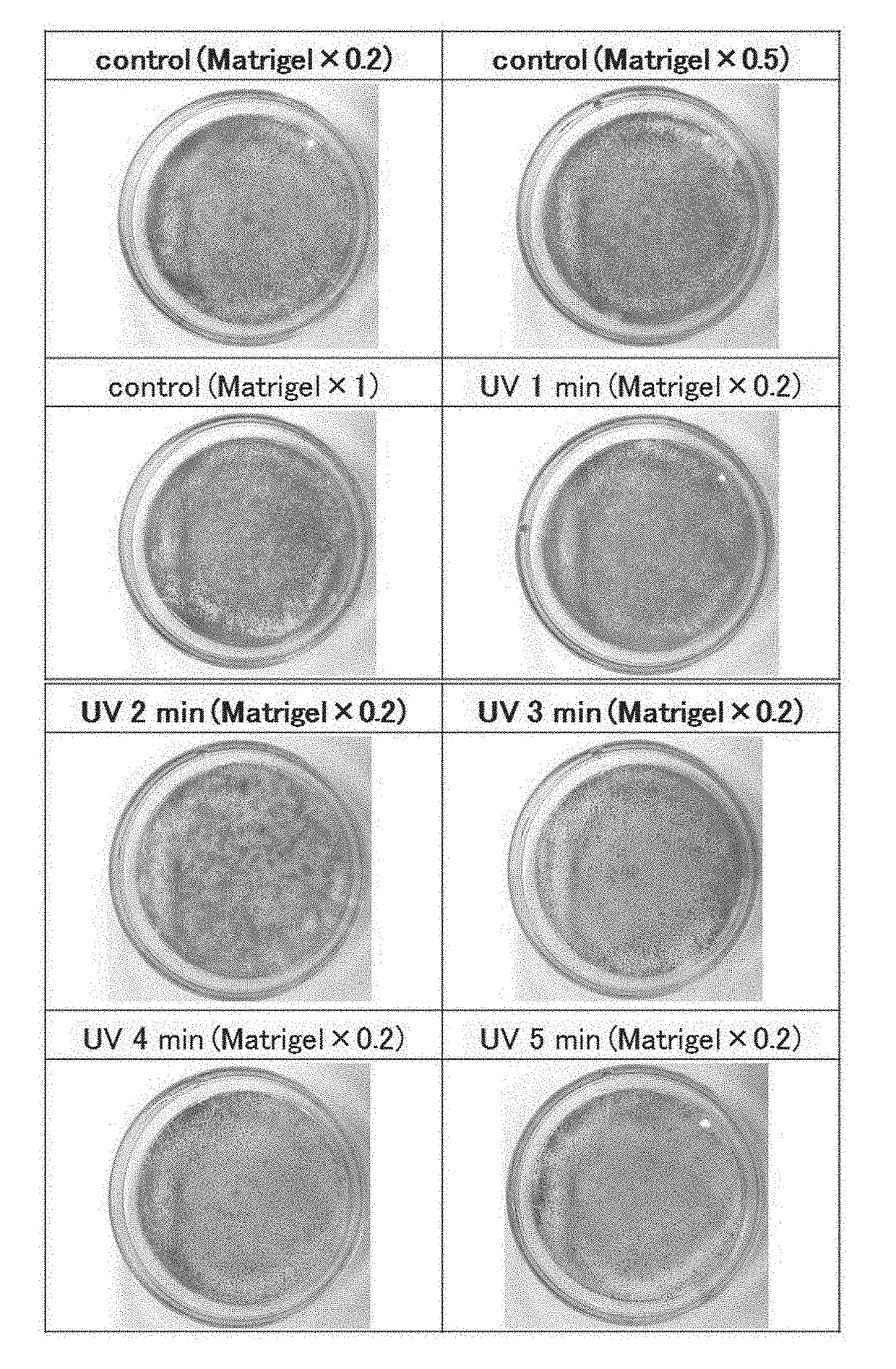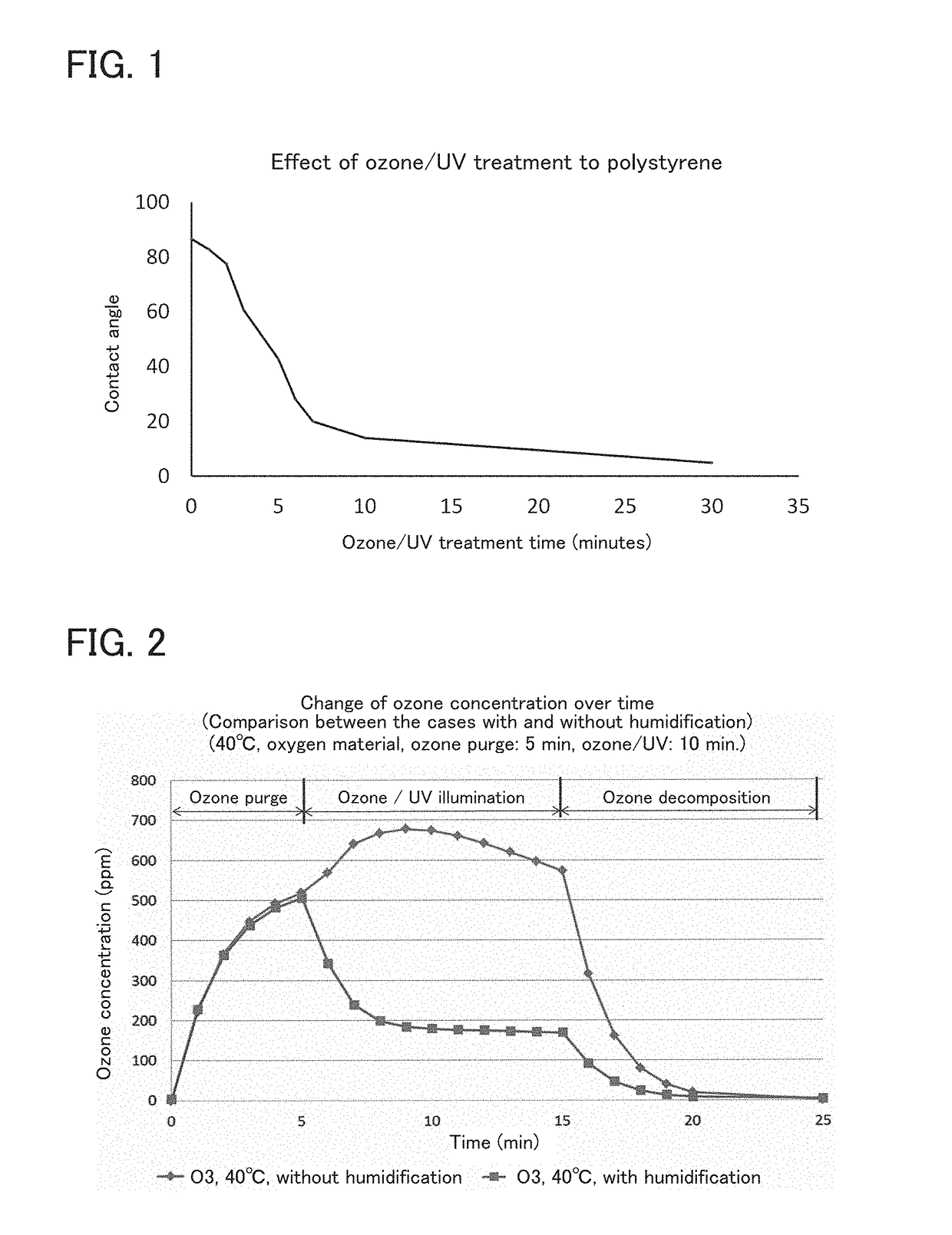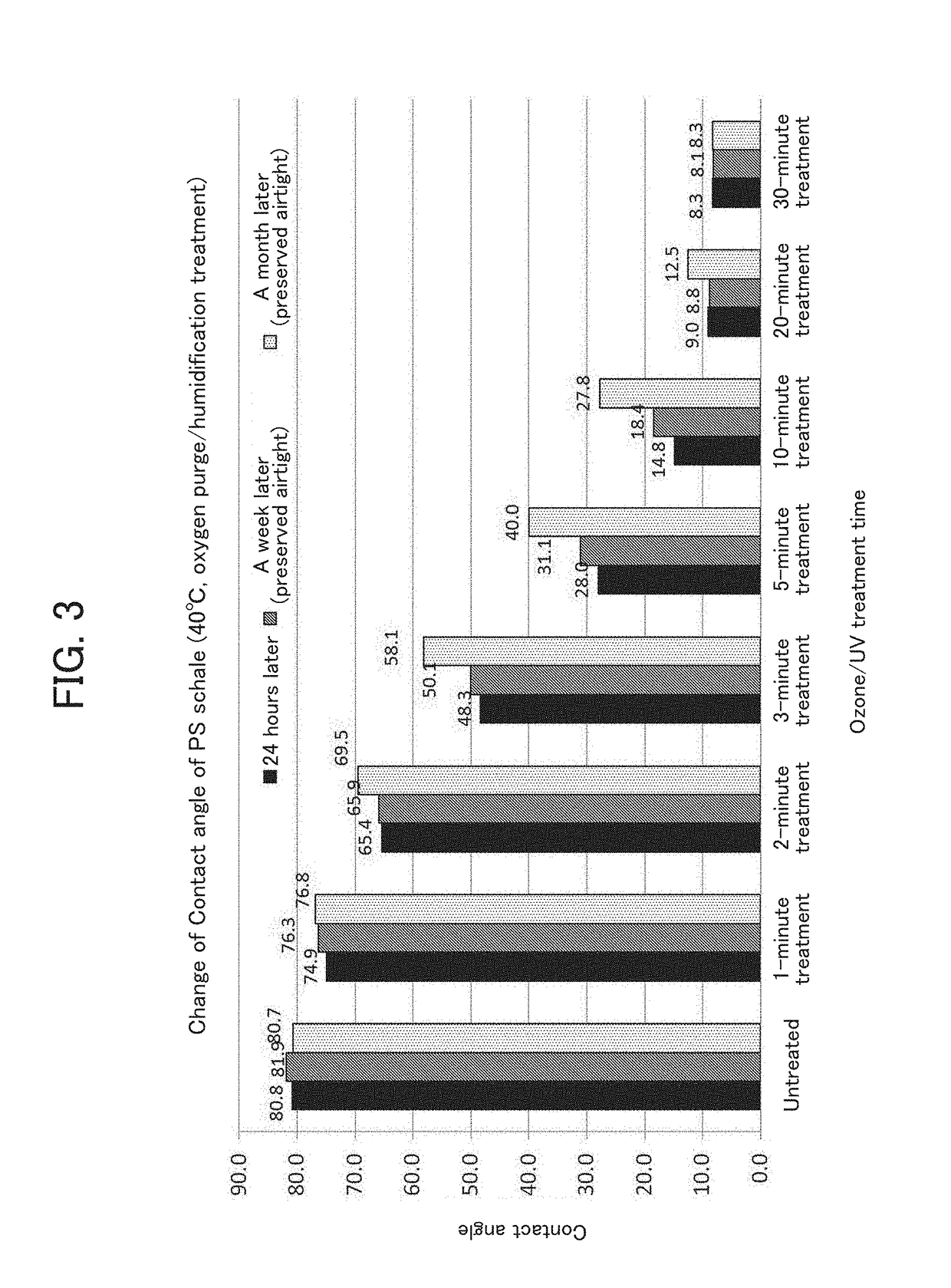Substrate for supporting cells and method for producing same
a technology of supporting cells and substrates, applied in biochemistry apparatus and processes, skeletal/connective tissue cells, embryonic cells, etc., can solve the problems of substrate needs to be treated, corona discharge treatment has a limitation in imparting hydrophilicity to a surface, surface deterioration, etc., to achieve high stability, stable imparting of hydrophilicity, and rare variance in results
- Summary
- Abstract
- Description
- Claims
- Application Information
AI Technical Summary
Benefits of technology
Problems solved by technology
Method used
Image
Examples
examples
[0114]The invention is more specifically described below by way of Examples. However, the invention is not limited to the Examples. All literatures cited throughout this application are incorporated in their entirety in this application by reference.
(Example 1) Change in Contact Angle by Ozone / UV Treatment to Resin Materials
[0115]Plates of a polytetrafluoroethylene (PTFE) (50×50 mm, thickness 1 mm, NICHIAS Corporation), a polyethylene (50×50 mm, thickness 1 mm, white), an acrylic resin (30×30 mm, thickness 3 mm, clear), an ABS resin (50×50 mm, thickness 0.5 mm, white), a polyethylene terephthalate (50×50 mm, thickness 0.3 mm, clear), a polypropylene (50×50 mm, thickness 0.5 mm, clear), a polycarbonate (50×50 mm, thickness 0.5 mm, clear) and a polystyrene (50×50 mm, thickness 0.45 mm, clear, Koeido) were set in an ozone / UV surface treatment apparatus, EKBIO-1100 (EBARA JITSUGYO CO. LTD., ozone generation lamps (6W×2), inner dimension of the tank: W240×H170×D175 (mm) / effective size W1...
example 8
(Example 8) Analysis of Functional Groups on Plate Surfaces Treated
[0141]In order to investigate the relation between cell adhesion and surface functional groups, change of surface functional groups of polystyrene plates by the presence or absence of an ozone environment, the presence or absence of humidification conditions, and the presence or absence of UV irradiation was analyzed.
[0142]Polystyrene dishes (Corning Incorporated, Massachusetts, USA; 430589) were prepared in the same manner as in Example 3 (1) to (4) except that the UV irradiation time was set at 3 minutes. From each of the dishes, plates of 8 mm-squares were cut out and the surface of the plates was analyzed by using a photoelectron spectrometer (JEOL Ltd., JPS-9010). Each sample was attached to a sample table and the sample table was placed in the preparation chamber, which was vacuumed. Thereafter, the sample table was inserted in the measuring room. Since the sample to be used in this analysis was made of polysty...
PUM
| Property | Measurement | Unit |
|---|---|---|
| water contact angle | aaaaa | aaaaa |
| wavelength | aaaaa | aaaaa |
| wavelength | aaaaa | aaaaa |
Abstract
Description
Claims
Application Information
 Login to View More
Login to View More - R&D
- Intellectual Property
- Life Sciences
- Materials
- Tech Scout
- Unparalleled Data Quality
- Higher Quality Content
- 60% Fewer Hallucinations
Browse by: Latest US Patents, China's latest patents, Technical Efficacy Thesaurus, Application Domain, Technology Topic, Popular Technical Reports.
© 2025 PatSnap. All rights reserved.Legal|Privacy policy|Modern Slavery Act Transparency Statement|Sitemap|About US| Contact US: help@patsnap.com



